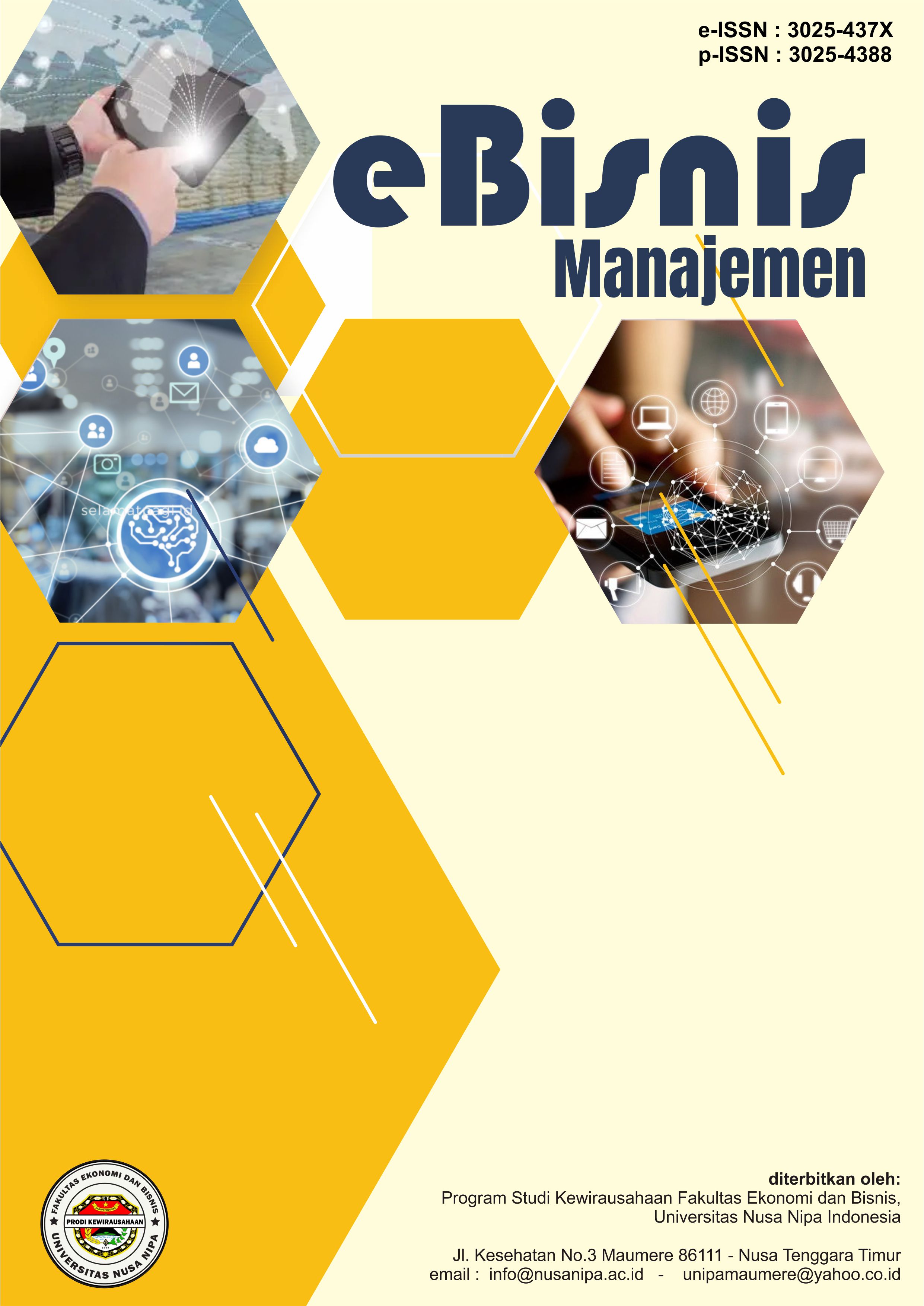Pengaruh Kelompok Referensi dan Harga Terhadap Keputusan Pembelian HP Xiaomi di Xiaomi Store MOG Kota Malang
DOI:
https://doi.org/10.59603/ebisman.v3i2.848Keywords:
reference group, price, buying decisionAbstract
This research is a quantitative descriptive research by using purposive sampling technique. The data are obtained from 100 respondents who use Xiaomi products and have made purchases at the Xiaomi store MOG Malang City. For data analysis, this research uses multiple linear regression analysis. The results of multiple linear regression analysis indicate that the reference group and price variables have a positive effect on purchasing decisions. The results of the F test show that the reference group and price variables have a simultaneous effect on purchase decisions. The results of the T test show that the reference group has a partial effect on the purchase decision and also the price has a partial effect on the purchase decision. Based on this research, it can be concluded that the reference group and price have a positive effect on purchasing decisions. It is suggested that the brand can carry out various kinds of promotion so that they can be accepted by all groups such as parents, not only teenagers. Besides, the brand can maintain their low prices but at the same time good quality that make customers want to buy Xiaomi cell phone products.
References
Amirullah. (2021). Prinsip-prinsip manajemen pemasaran. Sidoarjo: Indomedia Pustaka.
Damiati, et al. (2017). Perilaku konsumen. Depok: Rajawali Pers.
Faaza, F., & Samboro, D. (2019). Pengaruh store atmosphere dan harga terhadap keputusan pembelian pada Amstirdam Coffee & Roastery Malang. Jurnal Aplikasi Bisnis, 5(2). http://jab.polinema.ac.id
Febriani, M., & Kristianingsih, A. (2018). Pengaruh gaya hidup dan kelompok referensi terhadap keputusan pembelian smartphone merek Samsung (Studi pada mahasiswa program studi D-IV Manajemen Pemasaran Jurusan Administrasi Niaga Politeknik Negeri Malang). Jurnal Aplikasi Bisnis, 4(1). http://jab.polinema.ac.id
Ghozali, I. (2018). Aplikasi analisis multivariate dengan program SPSS 25. Semarang: Universitas Diponegoro.
Indrasari, M. (2019). Pemasaran dan kepuasan pelanggan. Surabaya: Unitomo Press.
Irwansyah, et al. (2021). Perilaku konsumen. Bandung: Widina Bhakti Persada.
Janie. (2012). Statistik deskriptif dan regresi linier berganda dengan SPSS. Semarang: Semarang University Press.
Pertiwi, A. (2020, Maret 18). Pasar smartphone Indonesia ternyata naik di tengah pandemi. Kompas Tekno. https://tekno.kompas.com/read/2021/03/18/09060077/pasar-smartphone-indonesia-ternyata-naik-di-tengah-pandemi?page=all
Raihan. (2017). Metode penelitian. Jakarta: Universitas Islam Jakarta.
Samsu. (2017). Metode penelitian: Teori dan aplikasi penelitian kualitatif, kuantitatif, mixed methods, serta research and development. Jambi: Pusaka.
Sangadji, E. M., & Sopiah. (2017). Perilaku konsumen: Pendekatan praktis disertai himpunan jurnal penelitian. Yogyakarta: Andi.
Simarta, D., et al. (2021). Manajemen perilaku konsumen dan loyalitas. Medan: Yayasan Kita Menulis.
Sudaryono. (2016). Manajemen pemasaran: Teori dan implementasi. Yogyakarta: Andi.
Sugiyono. (2013). Metode penelitian kuantitatif, kualitatif dan R&D. Bandung: Alfabeta.
Sugiyono. (2015). Metode penelitian tindakan komprehensif – Untuk perbaikan kinerja dan pengembangan ilmu tindakan. Bandung: Alfabeta.
Suryanti, R., & Nurtjahjani, D. (2019). Pengaruh kelompok acuan dan harga terhadap keputusan pembelian konsumen di Baegopa? Malang. Jurnal Aplikasi Bisnis, 5(1). http://jab.polinema.ac.id
Tjiptono, F., & Chandra, G. (2017). Pemasaran strategik (Edisi ke-3). Yogyakarta: Andi.
Downloads
Published
How to Cite
Issue
Section
License
Copyright (c) 2025 Ebisnis Manajemen

This work is licensed under a Creative Commons Attribution-ShareAlike 4.0 International License.





